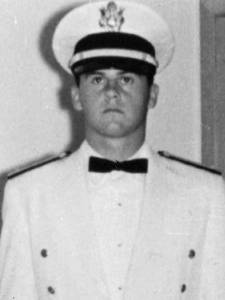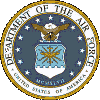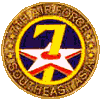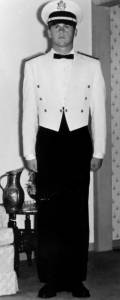| |
|
|
|
Armon D. Shingledecker
Captain
61ST TROOP CARRIER SQDN, 64TH TROOP CARRIER WING, 7TH AF United States Air Force Lima, Ohio December 26, 1941 to May 28, 1974 (Incident Date May 31, 1966) ARMON D SHINGLEDECKER is on the Wall at Panel 7E, Line 129 See the full profile or name rubbing for Armon Shingledecker |
  |

|


| |

He died May 31, 1966 on a mission to bomb the Dragon's Jaw bridge in Than Hoa Province. His remains were repatriated in the 1980's and identified in 1998. He was buried with honors in Lima Ohio in 1998. |
A Note from The Virtual WallThe road and railroad bridge at Than Hoa was a perennial target for Navy and Air Force aircrews throughout much of the war. Some 50 aircraft and their crews were lost while attacking the bridges. In one of the more extreme attempts (in the opinion of a Navy attack type, anyway), a decision was taken to use C-130 HERCULES cargo aircraft to attack the bridge.The scheme was as follows: the Air Force developed a special bomb, a rather large pancake-shaped affair 8 feet in diameter and 2 1/2 feet thick and weighing 5,000 pounds. The C-130's would fly below 500 feet to evade radar along a 43 mile route (which meant the C-130 would be vulnerable to enemy attack for about 17 minutes) and drop the bombs, which would float down the Song Ma River where they would pass under the bridge and detonate when sensors in the bomb detected the metal of the bridge structure. Although the C-130 crews would be flying at very low altitudes, and at night, they would need considerable protection by fighters and flak suppression aircraft. The first attempt was made on the night of May 30, 1965. Although the C-130 encountered no resistance at the beginning of its approach, heavy fire was encountered after it was too late to turn back. The 5 weapons were dropped successfully in the river and the C-130 made for the safety of the Gulf of Tonkin. The operation had gone flawlessly, and the C130 returned safely to Danang. Unfortunately, recon photos taken at dawn showed that there was no noticeable damage to the bridge, nor was any trace of the bombs found. A second attempt was made on the night of May 31. The C-130, commanded by Major Thomas F. Case, departed Danang shortly after midnight and proceeded to the target area. About two minutes prior to the scheduled C-130 drop time, supporting F-4s were making a diversionary attack when crew members saw anti-aircraft fire and a large ground flash in the vicinity of the bridge. Major Case and his crew were never seen or heard from again. Earlier that evening, an F-4C of the 555th TFS (Udorn) had been shot down south of Than Hoa (see Captain Ned Herrold), so that a total of ten Americans were down somewhere in the area. The next morning reconnaissance and search and rescue crews scoured the target area and the Gulf of Tonkin, but found no sign of the C-130, the F-4, or the aircrewmen. The bridge still stood, and would stand until 1973. The ten men lost that night were
Both the POW Network and Task Force Omega (TFO) biographies associate the F-4C loss with the C-130 bombing attack, but the F-4 was lost several hours before the C-130 even took off. TFO states that Ragland/Herrold went down at 1812 on 31 May, about 6 hours before the C-130 took off from Danang shortly after midnight (i.e., on 01 June). It therefore seems unlikely that the Ragland/Herrold mission had anything to do with the separate effort flown against the bridge. |
| Contact Us | © Copyright 1997-2019 www.VirtualWall.org, Ltd ®(TM) | Last update 08/15/2019. |